16 Colors And Their Beautiful Names In The Philippine Language
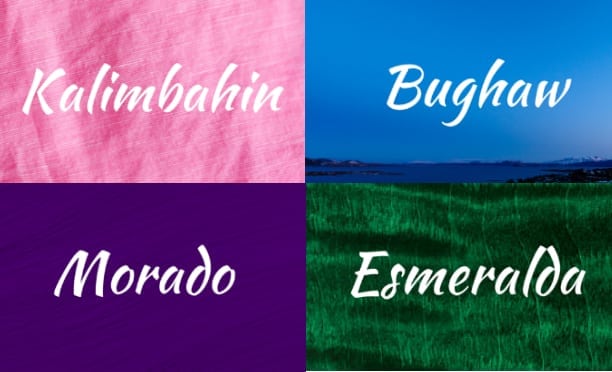
Do you remember Crayola?
It was and still is the most ubiquitous brand of crayons used by school kids. I remember how fascinated I was by the assorted colors of these crayons the same way I was mesmerized when I saw a rainbow for the very first time.
But then I wondered, how come there were no crayons labeled with Filipino color names? It would have been a nice idea for sure. We can even go the extra mile and explore what these colors are called in other languages in the country.
Also Read: 70 Things You Didn’t Know Had Filipino Names
After all, the Philippines is brimming with fascinating languages, and it’s only during President Quezon’s term when Tagalog was first used as the basis of our “wikang pambansa.”
Fueled by my curiosity, I consulted my ever-reliable Filipino dictionary and searched for answers. What I have collected so far are some of the most beautiful-sounding color names in the Philippine language. Some of these would even make great baby names!
Try This: FilipiKnow’s Ultimate Tagalog-English Dictionary
1. “Morado”

English equivalent: Purple
What’s in a name? A word of Spanish origin, “morado” eventually became part of the Filipino language as a local name for the English color purple. Purpura is another Pinoy alternative.
Dictionary definition: “Kulay lila na matingkad” (UP Diksiyonaryong Filipino, page 795).
2. “Lungti”

English equivalent: Green
What’s in a name? Lungti is the Filipino word used to describe all things green. Most Filipinos also use other variations like berde, lungtian, or lunti. The Tausugs, meanwhile, refer to this color as gaddung.
Dictionary definition: “Kulay sa pagitan ng dilaw at ng bughaw sa ispektrum” (UP Diksiyonaryong Filipino, page 724).
3. “Bughaw”

English equivalent: Blue
What’s in a name? There’s something so ethnic about the word bughaw, the reason why I prefer it over other Philippine names like asul, which is actually derived from the Spanish azul.
Others from the provinces have equally fascinating names for the color of the sky, like balbag (Iloko) and bilo (Maguindanao).
Dictionary definition: “Kulay ng maaliwalas na langit; ang bahagi ng ispektrum sa pagitan ng lungtian at lila” (UP Diksiyonaryong Filipino, page 196).
Also Read: 1 Shapes You Didn’t Know Had Filipino Names
4. “Lila”
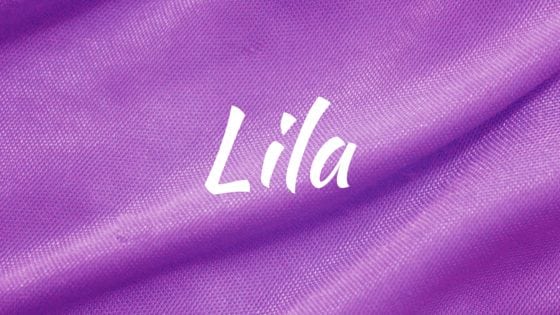
English equivalent: Violet/Lavender/Lilac
What’s in a name? Another color name of Spanish origin, lila is located at the end of the spectrum. It is known as the Filipino equivalent not only of violet but also of its lighter variations, like lavender and lilac. Other Filipino alternatives include ube, haban, and haban-ube.
Dictionary definition: “Mapusyaw na bughaw, may bahid na pula at nasa dulo ng ispektrum” (UP Diksiyonaryong Filipino, page 699).
5. “Mabaya” (Ivatan)
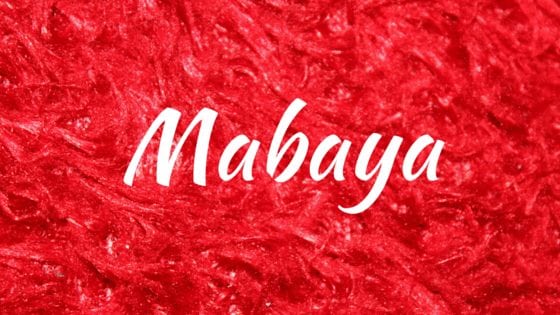
English equivalent: Red
What’s in a name? Since pula is probably one of the most commonly used Filipino color names, I’ve decided to put the spotlight instead on mabaya, a term used by the people from the northernmost province of Batanes.
Other Philippine words with similar meaning are kanaway (Maranaw), bulagaw (Waray), anbalanga (Pangasinan), and labaga (Ilokano).
Dictionary definition: Mabaya – “[Iva]:pula” (UP Diksiyonaryong Filipino, page 732); Pula –“Kulay na katulad ng sa dugo” (page 699).
Also Read: 9 Interesting Facts You Might Not Know About Batanes
6. “Rosas”

English equivalent: Rose
What’s in a name? You’ve probably seen roses (i.e. the flower) with colors ranging from white to deep red. But in the context of the color spectrum, rosas or rose is a color halfway between red and magenta. Therefore, most Filipinos who use the terms pula and rosas interchangeably are technically wrong.
Dictionary definition: “Mapusyaw na kulay pula” (UP Diksiyonaryong Filipino, page 1066).
7. “Kalimbahin”
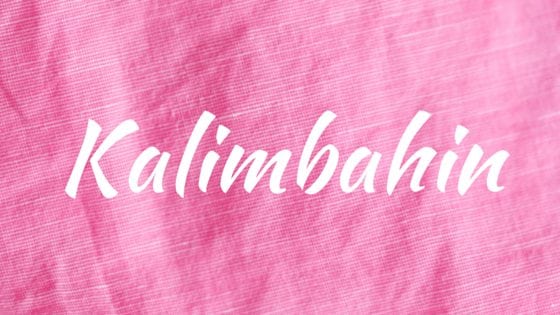
English equivalent: Pink
What’s in a name? Somewhere between rose and lavender is the color pink, which is often referred to as rosas in the Filipino language. However, if you’re going to compare it to the previous entry (#6), you’ll immediately notice the difference.
In addition to that, rosas (i.e. the flower) has different colors–ranging from white and pink to red and deep red. Therefore, kalimbahin, as suggested by the UP dictionary, can be considered a more accurate Filipino translation.
Dictionary definition: Kalimbahin – “pink” (UP Diksiyonaryong Filipino, page 555); Pink – “Kulay mula sa mapusyaw na pula hanggang sa maputla at mamula-mulang lila” (page 975).
8. “Kayumanggi”
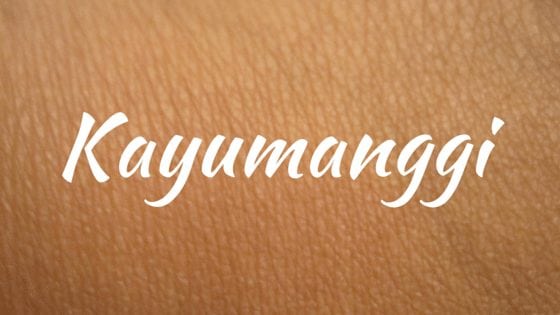
English equivalent: Brown
What’s in a name? Kayumanggi is the Tagalog word used to describe the color of the skin, specifically the Filipino skin. In dictionaries, it is often synonymous with the English color brown and its lighter shade, coffee or kape.
The color spectrum, however, suggests that brown has a much deeper color. Tan, meanwhile, is another lighter variation of brown described by the UP dictionary as “manilaw-nilaw na kape o kayumanggi” (page 1222).
Dictionary definition:“Kakulay ng kape o lupa, karaniwang tumutukoy sa kutis ng balat” (UP Diksiyonaryong Filipino, page 602).
9. “Kunig” (Iloko)

English equivalent: Yellow
What’s in a name? This Ilokano term refers to the color yellow, known in the Tagalog language as dilaw. Another lesser-known local name for this color is amarilyo, which evolved from the Spanish amarillo that has the same meaning. The Tausugs, meanwhile, call this color biyaning in their native language.
Dictionary definition: Kunig –“[Ilk]: dilaw” (UP Diksiyonaryong Filipino, page 645); Dilaw – “Kulay na nasa pagitan ng lungti at kulay kahel sa ispektrum, hal. kulay ng hinog na mangga” (page 290).
10. “Kahel”

English equivalent: Orange
What’s in a name? Derived from the Spanish cajel, the word kahel has been known as the Filipino equivalent of the color orange. Alternative names such as dalandan and naranha (from the Spanish naranja) can also be used.
Dictionary definition: Kahel –“dalandan” (UP Diksiyonaryong Filipino, page 543); Dalandan – “Kulay na mamula-mulang dilaw at nasa pagitan ng dilaw at pula sa ispektrum” (page 255).
Also Read: 30 Filipino Words With No English Equivalent
11. “Malamaya”
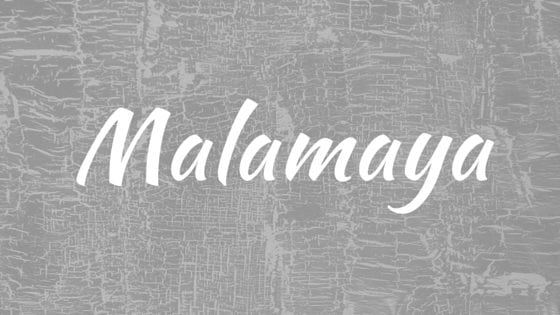
English equivalent: Grey/Gray
What’s in a name? Malamaya is a relatively obscure Filipino word for the color grey/gray. According to the UP dictionary, it’s an early Tagalog term originated from the root words “mala” and “maya” (mala + maya or “like a maya“), the latter being the name of a familiar bird in the Philippines known for its brownish or grayish feathers.
A more popular Filipino word for this color is abo or abuhin, used to describe things that have the same color as ash.
Dictionary definition: Malamaya –“abuhin” (UP Diksiyonaryong Filipino, page 744); Abuhin – “Kulay abo” (page 7).
12. “Puraw” (Iloko)
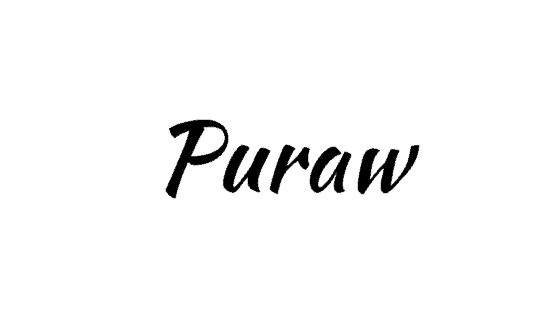
English equivalent: White
What’s in a name? Puraw is the Ilokano color of purity. The Tagalogs, meanwhile, use puti as the Filipino equivalent of the color white. Other commonly used Philippine terms include bukay (Tiboli), busag (Waray), malattibuntal (Maguindanao), and maydak (Ivatan).
Dictionary definition: Puraw –“[Ilk]: puti” (UP Diksiyonaryong Filipino, page 1022); Puti – “Kulay na repleksiyon ng lahat ng nakikitang sinag ng ispektrum; kulay ng gatas o yelo” (page 1025).
13. “Garing”

English equivalent: Ivory
What’s in a name? In the English language, this off-white color is called ivory, named after the main component of the teeth and tusks of animals such as elephants and walruses. Little-known, however, is its Filipino equivalent called garing which the UP dictionary defines as a white color with a tinge of yellow.
Dictionary definition: “Kulay krema o manilaw-nilaw na puti” (UP Diksiyonaryong Filipino, page 389).
14. “Kanaryo”
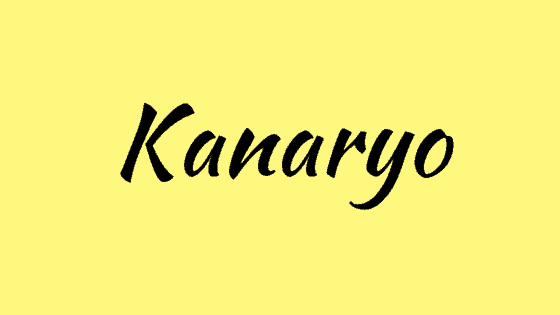
English equivalent: Canary
What’s in a name? Derived from the Spanish canario, this word is the Filipino equivalent of canary, known in the color spectrum as the lighter shade of yellow.
Kanaryo (or canary) is also the name of a small bird (Serinus canarius) characterized by colorful feathers.
Dictionary definition: “Mapusyaw na dilaw” (UP Diksiyonaryong Filipino, page 568).
15. “Esmeralda”
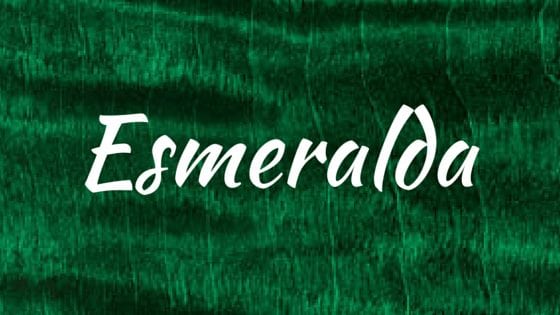
English equivalent: Emerald/Emerald Green
What’s in a name? Esmeralda, one of many Filipino words derived from the Spanish language, is the local equivalent of emerald, which is a darker shade of green. It’s also the name of a famous gemstone.
Dictionary definition: “1. batong mamahalin, makinang, at kulay lungti; 2. ang kulay nito” (UP Diksiyonaryong Filipino, page 344).
16. “Dagtum” (Sebwano)

English equivalent: Black
What’s in a name? Capping off our list is the lone entry from the Cebuano language–dagtum, which is their word equivalent for black.
The darkest color in the spectrum is also known by different names in other Philippine languages. These include itom (Waray, Bikolano, Maguindanao, Tausug, etc.), itum (Aklanon), nangisit (Iloko), and tuling (Kapampangan).
Dictionary definition: Dagtum – “[Seb]: itim” (UP Diksiyonaryong Filipino, page 251); Itim – “Pinakamadilim na kulay; walang kulay, gaya ng uling” (page 523).
Also Read: 11 Filipino Slang Words With Surprising Origins
References
Almario, V. (2010). UP Diksiyonaryong Filipino. Diliman: UP Sentro ng Wikang Filipino.
Belvez, P. (2015). Development of Filipino, The National Language of the Philippines. National Commission for Culture and the Arts. Retrieved 4 June 2016, from http://goo.gl/vWmJte
FilipiKnow
FilipiKnow strives to ensure each article published on this website is as accurate and reliable as possible. We invite you, our reader, to take part in our mission to provide free, high-quality information for every Juan. If you think this article needs improvement, or if you have suggestions on how we can better achieve our goals, let us know by sending a message to admin at filipiknow dot net
Copyright Notice
All materials contained on this site are protected by the Republic of the Philippines copyright law and may not be reproduced, distributed, transmitted, displayed, published, or broadcast without the prior written permission of filipiknow.net or in the case of third party materials, the owner of that content. You may not alter or remove any trademark, copyright, or other notice from copies of the content. Be warned that we have already reported and helped terminate several websites and YouTube channels for blatantly stealing our content. If you wish to use filipiknow.net content for commercial purposes, such as for content syndication, etc., please contact us at legal(at)filipiknow(dot)net